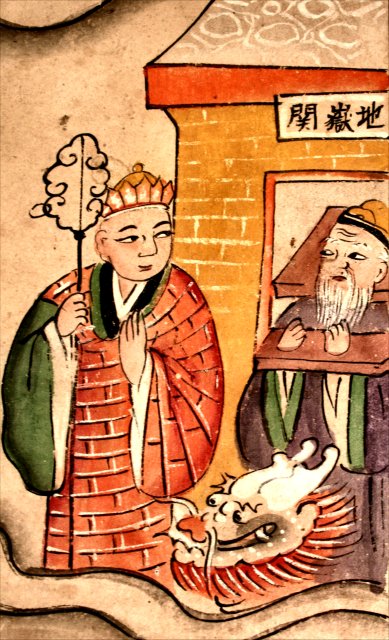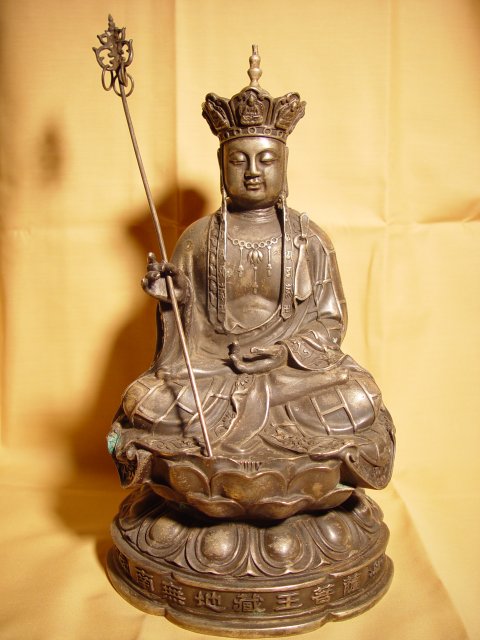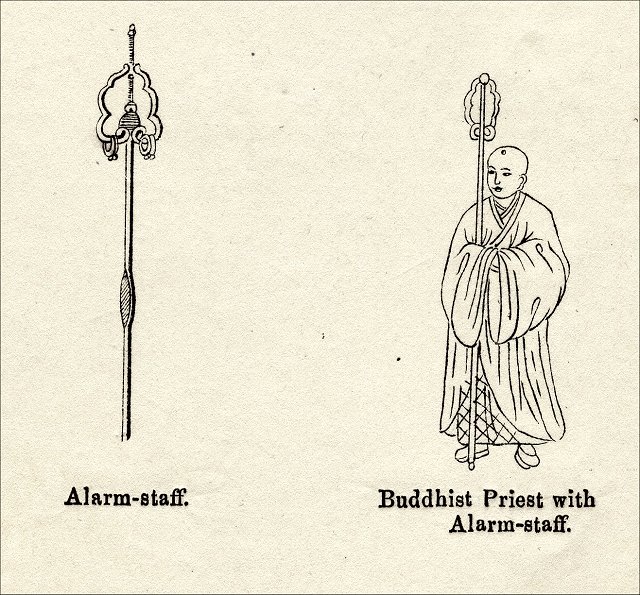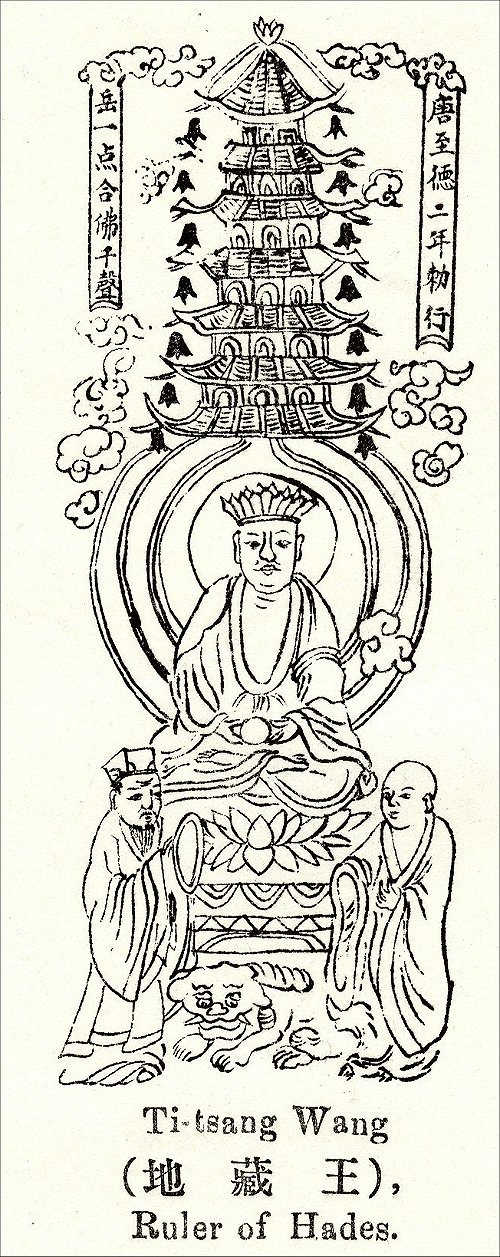
Translation
The gate to hell
Being the most famous of the hell kings, Yama's fifth hell is often treated differentlly from the rest. In rows of hanging scrolls or on cliff faces, his hell appears almost in the middle of the whole picture program, often next to an additional image of Ksitigarbha in the dead center (literally). Ksitigarbha is the great bodhisattva of compassion who wanders the hells spreading the dharma and offering salvation. Thus Yama's position as the fifth in a series of ten is not necessarily devaluing him because visually he would be in the middle of the underworld next to Ksitigarbha (even though some legends contend that Yama had actually been demoted to the fifth because of his leniency).
Like this hell boasting the only other exit to the Pure Land, a second entrance gate would here seem sequentially out of place, but as symbols, this pair of thresholds highlights the pivotal nature of Yama's court. The gate is even positioned on the right side of the scroll and hence immediately adjacent to the central focal point of the whole series. The monk who stands at this gate at first looks like Mulian (when compared to his labeled image in the tenth scroll), but it is most likely Ksitigarbha himself. Many legends in fact contend that Mulian became Ksitigarbha.

Ksitigarbha or "Dizang wang"

